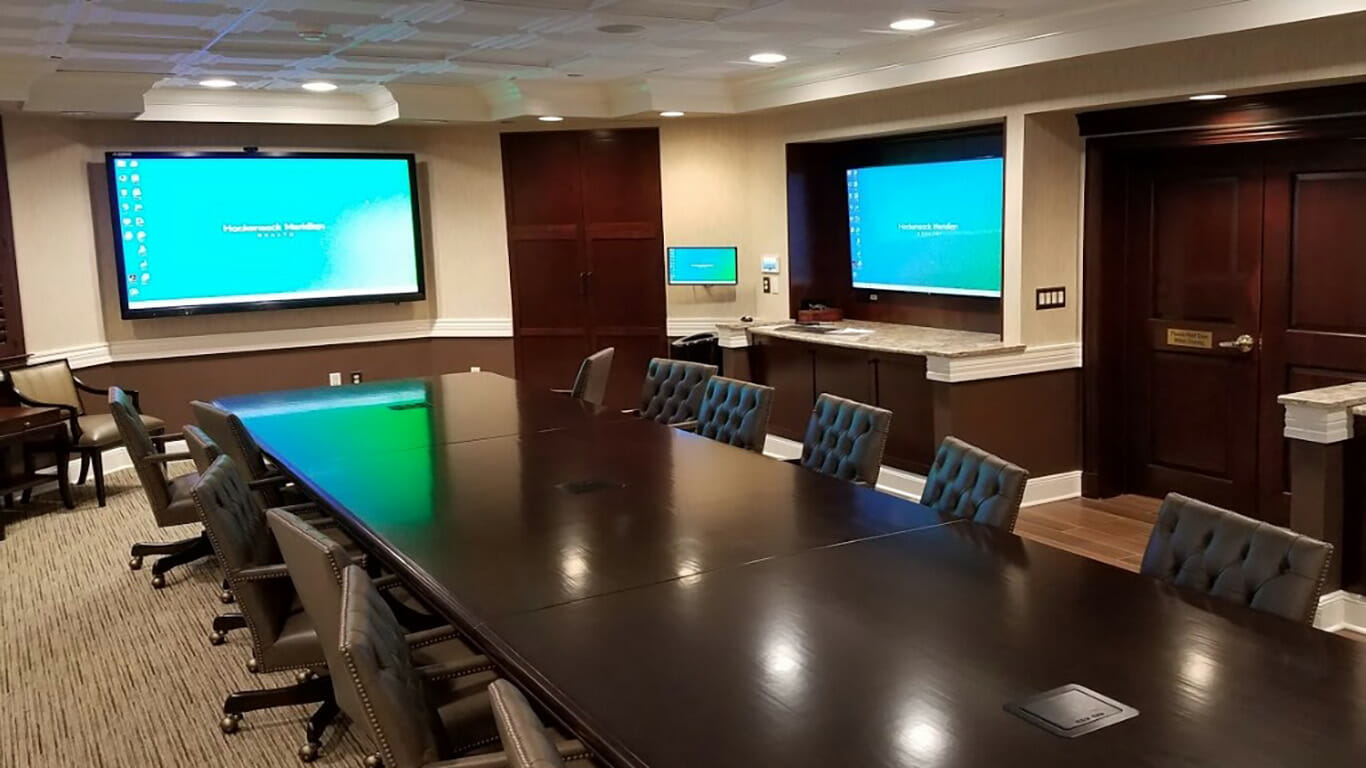
Video conferencing continues to be an increasingly important means of communication between employees, clients, vendors and students. As there are a multitude of benefits to video conferencing ranging from increased productivity and collaboration to savings on travel costs, video conferencing is here to stay in the business world. There are several video conferencing platforms available in the market including: Zoom, GoogleMeets, WebEx, Crestron, GoToMeetings and more. Each platform carries its own features and capabilities. Choosing the right video conferencing platform can be overwhelming, but it’s crucial to consider these three factors before making a decision.
One of the most crucial things to consider when choosing a video conferencing platform is ease of use and comfortability. Your video conferencing platform should be easy for your team to create, host and join meetings regardless of how “tech savvy” your team members are. A user-friendly interface with clear navigation and intuitive controls will ensure that your team can quickly adapt to the platform and focus on the meeting content rather than struggling with the technology.
The platform should also be one that allows others to seamlessly join meetings and easily adjust settings such as your video and audio settings. It should support various methods of joining, such as through a web browser or a dedicated app, with straightforward instructions for participants to follow. The platform should eliminate any unnecessary barriers or complex setup procedures, allowing attendees to join meetings with ease, regardless of their familiarity with the technology.
If you are looking for a video conferencing platform that allows for flexibility, you may want to consider Agnostic Conferencing Platforms. When it comes to agnostic video conferencing, users are not tied down to one conferencing platform, and instead can communicate through your chosen platform. Instead, they provide the ability to communicate through your chosen platform while still maintaining compatibility with other platforms. This flexibility ensures that you can collaborate with clients, partners, or colleagues who may be using different video conferencing software, eliminating the need for everyone to switch to a single platform.
When choosing a video conferencing platform, it’s essential to take into account the existing workflow and preferences of your company or team members. It is important to consider what platforms your company or team members are accustomed to throughout their day-to-day operations.
If your business has a company-wide standard of using specific programs for file sharing and communications (i.e.: Microsoft or Google), they may choose to utilize that same platform for video conferencing in order to remain consistent with their workflow, while also saving on licensing fees. Many collaboration suites offer bundled packages that include video conferencing capabilities, allowing you to leverage your existing subscription and avoid additional costs associated with standalone video conferencing solutions.
However, if you are looking to branch out, it is also a good idea to consider what platform is widely used and preferred with your team members, clients, vendors, etc. Conducting surveys or gathering feedback from your team, clients, and vendors can provide valuable insights into the platforms that are widely used and preferred within your network. This ensures that your chosen video conferencing platform aligns with the preferences and needs of key stakeholders, fostering better collaboration and engagement.

Screen sharing and recording capabilities are critical for your teammates to collaborate remotely. Look for video conferencing platforms that allow you to share your screen and easily switch between different applications to ensure a smooth and uninterrupted workflow.
A video conferencing platform with recording capabilities allows you to record important meetings or presentations and share them for future reference. These recordings can be valuable for future reference, training purposes, or for sharing with team members who couldn’t attend the live session. It ensures that key information is not lost and can be revisited at any time, enhancing productivity and knowledge retention.
Several video conferencing platforms may also provide a multitude of unique features such as: live chats, breakout rooms and brand integration, and more. Breakout rooms are another valuable feature that allows large meetings to be divided into smaller groups for more focused discussions or collaborative activities. Additionally, certain platforms offer brand integration options, allowing you to customize the meeting interface with your company’s logo, colors, or branding elements for a more personalized and professional touch.
By selecting a video conferencing platform with robust screen sharing and recording capabilities, along with other useful features, you can empower your team to collaborate effectively, share information effortlessly, and maximize productivity in remote or hybrid work environments.
When it comes to choosing the right video conferencing platform, it is so important to consider hiring a professional audio visual consultant to help navigate the best platform for your team, while also installing and integrating the proper technologies to support your meetings. CSAV Systems can work with your team to optimize your conference room with quality video conferencing room solutions. From small huddle rooms to large boardrooms and unique conference spaces, CSAV Systems can work with you to create a custom video conferencing solution that is just right for your team. Call us today or fill out our free systems analysis form to learn how we can help install, upgrade or service your conference room solutions.